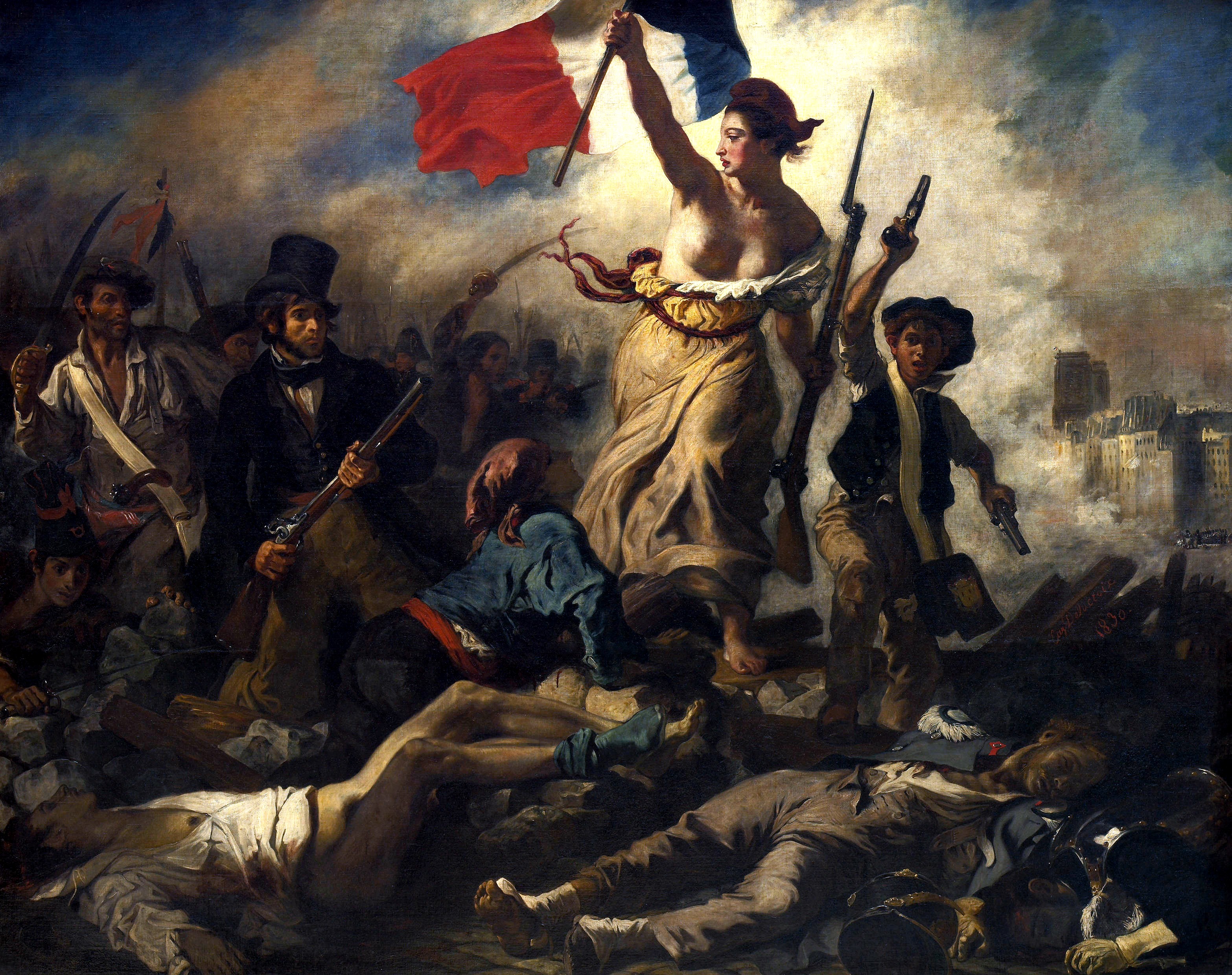Eugène Delacroix was one of the giants of French painting, but his last full retrospective exhibition in Paris dates back to 1963, the centenary year of his death. In collaboration with the Metropolitan Museum of Art in New York, the Louvre is holding a historic exhibition featuring some 180 works—mostly paintings—as a tribute to his entire career. The exhibition ends July 23, 2018. It is one of the most important shows this year!
The Paris uprising of July 27, 28, and 29, 1830, known as the Trois Glorieuses (Three Glorious Days), was initiated by the liberal republicans for violation of the Constitution by the Second Restoration government. Charles X, the last Bourbon king of France, was overthrown and replaced by Louis Philippe, Duke of Orléans. Delacroix, who witnessed the uprising, perceived it as a modern subject for a painting; the resulting work reflects the same romantic fervor he had applied to Massacre at Chios, a painting inspired by the Greek war of independence.
The allegory of Liberty is personified by a young woman of the people wearing the Phrygian cap, her curls escaping onto her neck. Vibrant, fiery, rebellious, and victorious, she recalls the Revolution of 1789, the sans-culotte, and popular sovereignty. In her raised right hand is the red, white, and blue flag, a symbol of struggle that unfurls toward the light like a flame.
Two Parisian urchins have spontaneously joined the fight: the one on the left clings to the cobblestones, wide-eyed under his light infantry cap; the more famous figure to the right of Liberty is Gavroche, a symbol of youthful revolt against injustice and sacrifice for a noble cause. He sports the black velvet beret (or faluche) worn by students, as a symbol of rebellion, and carries an overlarge cartridge pouch slung across his shoulder. He advances right foot forward, brandishing cavalry pistols with one arm raised, a war cry on his lips as he exhorts the insurgents to fight.
The kneeling figure with the top hat of a bourgeois or fashionable urbanite may be Delacroix himself, or one of his friends. He wears loose-fitting trousers and an artisan's red flannel belt, and carries a double-barreled hunting gun. The wounded man raising himself up at the sight of Liberty wears a knotted yellowish scarf, echoing the color of the heroine's dress; his peasant's smock and red flannel belt suggest the temporary workers of Paris. The blue jacket, red belt, and white shirt echo the colors of the flag.
This realistic and innovative work inspired one of the most important artists of the 20th century to create an equally iconic masterpiece. What do we mean? Here is the answer.


 Eugène Delacroix
Eugène Delacroix